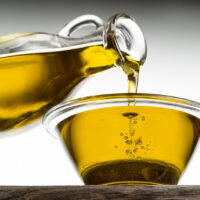Benefits of cashback credit cards
Cashback reward programs are incentive measures released by credit card companies for credit card holders where a portion of the amount spent by the credit card holders on their credit cards is paid back to them. This is to encourage the cardholder to use the credit card more frequently. Incentives can be monetary or in the form of flyer miles or points.

Cashback credit cards enable the card holders to get about 0.5 to 2 percent of their expenditure back in the form of an annual refund. This is either credited to the account linked to their credit card or paid directly to the cardholder. Cashback credit cards are beneficial to cardholders who pay their credit card statement promptly every month. If they fault on the balance repayment, they will have to pay higher interest rates which would eclipse any monetary rewards they earn.
Cashback credit cards in the country were first conceptualized in the 1990s. The bigger card issuers increased the portion of cashback to 5 percent. This 5 percent was not applicable to every purchase, though. It was applicable to purchases made at gas stations, pharmacies and grocery stores for six months. The cashback portion of any other purchase was about 1 percent. This was to encourage people to apply for credit cards. However, a study conducted in 2010 showed that cashback credit cards typically moved money from households with low income to those with high income. But in 2012, with prices of gasoline increasing, gas cashback credit cards became very popular in the country. Cardholders were given a 3 percent APR on gas cashback credit cards. The biggest advantage of the gas cashback credit cards was that the consumer could be assured of a guaranteed annual payment of a percentage of the money he spent on gas through the year in the form of a rebate check.
Cashback credit cards have been in existence, then, for nearly 15 years now and they continue to be popular. Most credit card users prefer low or 0 percent APR credit cards. But the ones who pay their balance every month find cashback credit cards to have solid value because they do not have to worry about increased interest rates. Initially, though, cashback reward programs started out without complications. Customers were offered about 1 percent on every purchase they made. It was a flat percentage rate. This was given to the customer at the end of the year in a statement credit or the form of a check. Today, various card issuers have differing cashback offers on purchases made. Cashback credit programs have three components to them. One is the percentage a customer earns on purchases, two, the purchases in certain categories are rewarded more than purchases in the other, and third, the monetary rewards are paid to the consumer through different means.
The promise that is given by cashback credit programs if that. To put it simply, you get paid for shopping. However, before you make a decision, consider the pros and cons of such an offer. The obvious advantages include the fact that you get paid a particular percentage of your purchases by the end of the year. If your credit score is good, you will be eligible for the best of the cashback credit cards which give 1 percent to 1.5 percent on all purchases, and cashback up to 6 percent for purchases in a certain category like gasoline or at restaurants. Some credit card issuers offer you a bonus if you purchase for a certain amount within a certain period. This bonus could be anywhere from $50 to $500, which, of course, means more money.
On the other hand, some of the best cashback credit cards which, sometimes, pay cashback as high as 6 percent on purchases in a certain category also charge a high annual fee amounting to anywhere between $50 and $100. These cards also charge higher interest rates when compared to standard cards. Some credit card issuers also put a limit on how much cashback you can collect in a given year. Also, the earnings a consumer gets in the bonus categories are not automatic. The consumer must enroll himself for it every quarter online to receive the bonus.
Therefore, before going for a cashback credit card, it is important to consider what one’s needs are. Cashback credit cards that offer a good rate for purchases like gasoline and groceries are usually the best. However, if you are a consumer who carries over balance instead of paying off the credit balance every month, it will be more beneficial to go for credit cards that offer low-interest rates.











